Dalbergioid sensu lato clade
Martin F. Wojciechowski


This tree diagram shows the relationships between several groups of organisms.
The root of the current tree connects the organisms featured in this tree to their containing group and the rest of the Tree of Life. The basal branching point in the tree represents the ancestor of the other groups in the tree. This ancestor diversified over time into several descendent subgroups, which are represented as internal nodes and terminal taxa to the right.

You can click on the root to travel down the Tree of Life all the way to the root of all Life, and you can click on the names of descendent subgroups to travel up the Tree of Life all the way to individual species.
For more information on ToL tree formatting, please see Interpreting the Tree or Classification. To learn more about phylogenetic trees, please visit our Phylogenetic Biology pages.
close boxIntroduction
The "Dalbergioid sens. lat." clade includes the tribe Amorpheae and the "dalbergioid sens. str." clade ("dalbergioids" sensu Lavin et al., 2001). First described by Lavin et al. (2001), the "dalbergioid" legumes are a pantropical group of papilionoids originally recognized on the basis of combined molecular and morphological phylogenetic evidence and circumscribed to include all genera (44 genera, c. 1100 species) previously referred to the tribes Aeschynomeneae, Adesmieae, subtribe Bryinae of the Desmodieae, and tribe Dalbergieae except for Andira, Hymenolobium, Vatairea, and Vataireopsis (Lavin et al., 2001). The discovery of the dalbergioid clade prompted a re-examination of root nodule structure within this group and the subsequent conclusion that the "aeschynomenoid" type of root nodule (Sprent, 2001) is a non-molecular synapomorphy for this clade (Lavin et al., 2001). The tribe Amorpheae consists of eight genera (c. 240 species), all American, of small trees and perennial and annual herbs distributed primarily in warm temperate and desert regions of the northern hemisphere, but most abundant and diverse in Mexico (Barneby, 1977).
Discussion of Phylogenetic Relationships
The recognition of the dalbergioid legumes by Lavin et al. (2001) brought together members of tribes Aeschynomeneae, Adesmieae, Dalbergieae, and subtribe Bryinae of the Desmodieae, but the position of this clade within Papilionoideae was not well clarified by their analysis; preliminary evidence suggested that its sister group included the tribe Amorpheae. More recent studies based on analyses of molecular sequence data (McMahon and Hufford, 2004; Wojciechowski et al., 2004) provide convincing support for the monophyly of Amorpheae, confirming Barneby's (1977) hypothesis of Amorpheae as a 'natural group', and place Amorpheae as the sister group to the dalbergioids sensu Lavin et al. (2001). Together these two clades comprise what has been referred to as the "dalbergioids sens. lat." clade (Wojciechowski et al., 2004). Similarities in base chromosome number, the presence of glandular punctuate leaves, and indehiscent single-seeded pods among many dalbergioids also support this relationship with Amorpheae (Wojciechowski et al., 2004). Furthermore, these studies suggest weak support for a sister group relationship of the primarily tropical American genera Andira and Hymenolobium of Dalbergieae to the dalbergioids sens. lat. clade.
Within dalbergioids, three informal, well-supported subclades are recognized (Lavin et al., 2001): the Adesmia clade (6 genera, c. 360 species mainly Neotropical), the Dalbergia clade (17 genera, c. 706 species pantropical, centered in Africa), and the Pterocarpus clade (22 genera, c. 200 species mainly Neotropical). In the analysis of Amorpheae by McMahon and Hufford (2004), two well-supported subclades were recognized: the "Amorphoid" clade (Amorpha, Apoplanesia, Errazurizia, Eysenhardtia, and Parryella), characterized by non-papilionaceous flowers, and the "Daleoid" clade (Dalea, Marina, and Psorothamnus), characterized by generally papilionaceous corollas.
References
Barneby, R. C. 1977. Daleae Imagines, An illustrated revision of Errazurizia Philippi, Psorothamnus Rydberg, Marina Liebmann, and Dalea Lucanus emend. Barneby, including all species of Leguminosae of tribe Amorpheae Borissova ever referred to Dalea. Memoirs of the New York Botanical Garden 27: 1-892.
Lavin, M., R. T. Pennington, B. B. Klitgaard, J. I. Sprent, H. C. de Lima, and P. E. Gasson. 2001. The dalbergioid legumes (Fabaceae): delimination of a pantropical monophyletic clade. American J. Botany 88: 503-533.
McMahon, M., and L. Hufford. 2004. Phylogeny of Amorpheae (Fabaceae: Papilionoideae). American J. Botany 91: 1219-1230.
Wojciechowski, M. F., M. Lavin, and M. J. Sanderson. 2004. A phylogeny of legumes (Leguminosae) based on analysis of the plastid matK gene resolves many well-supported subclades within the family. American J. Botany 91: 1846-1862.
Title Illustrations

| Scientific Name | Dalbergia gracilis Benth. |
|---|---|
| Location | Bolivia |
| Specimen Condition | Live Specimen |
| Copyright | © Robin Foster |
| Scientific Name | Amorpha canescens Pursh |
|---|---|
| Location | Lincoln County, Kansas |
| Comments | Commonly called Lead Plant. |
| Specimen Condition | Live Specimen |
| Copyright | © Mike Haddock |
| Scientific Name | Dalea aurea Nutt. ex Pursh |
|---|---|
| Location | Mitchell County, Kansas |
| Comments | Commonly called Silktop dalea. |
| Specimen Condition | Live Specimen |
| Copyright | © Mike Haddock |
About This Page
Martin F. Wojciechowski

Arizona State University, Tempe, Arizona, USA
Correspondence regarding this page should be directed to Martin F. Wojciechowski at
Page copyright © 2006 Martin F. Wojciechowski
All Rights Reserved.
- First online 14 June 2006
- Content changed 14 June 2006
Citing this page:
Wojciechowski, Martin F. 2006. Dalbergioid sensu lato clade. Version 14 June 2006 (under construction). http://tolweb.org/Dalbergioid_sensu_lato_clade/60336/2006.06.14 in The Tree of Life Web Project, http://tolweb.org/




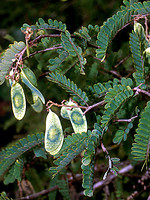
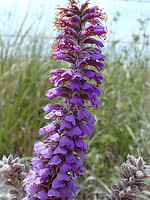
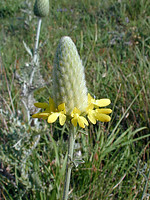
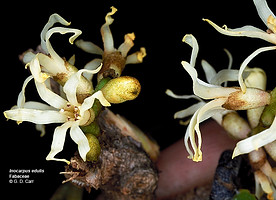



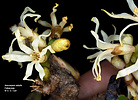

 Go to quick links
Go to quick search
Go to navigation for this section of the ToL site
Go to detailed links for the ToL site
Go to quick links
Go to quick search
Go to navigation for this section of the ToL site
Go to detailed links for the ToL site